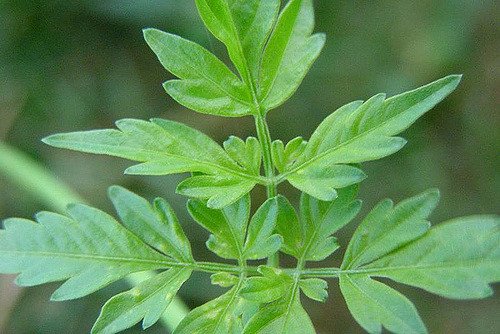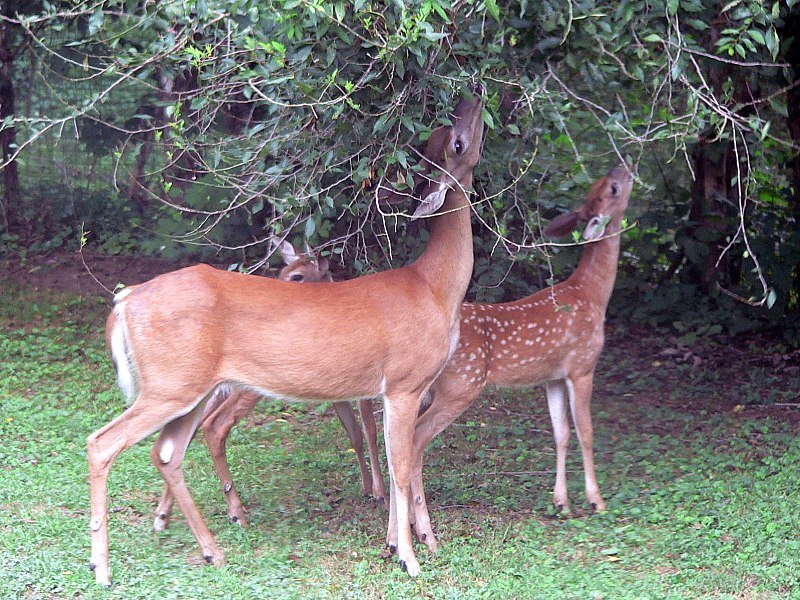Table of Contents (click to expand)
The food chain is a way of describing how different organisms on Earth interact with each other. The food chain starts with the producers, who make their own food using sunlight or chemicals. The producers are eaten by the consumers, who are either herbivores or carnivores. The carnivores are eaten by the omnivores, and the top of the food chain is the apex predator. Decomposers are the organisms that eat the dead bodies or waste products of the other organisms in the food chain.
Different organisms on Earth interact with each other in a varied manner. They can establish a mutual alliance, called symbiosis, or they can choose to compete with each other for resources. Another option is the rather morbid route of gobbling another organism to satisfy their needs! This is where the concept of a food chain comes in.
The concept of the food chain was first introduced by an Arab scientist Al-Jahiz in the ninth century and now forms the centerpiece of ecological studies. The food chain is a linear series of organisms consuming one another so that the energy and nutrients pass from one to the next. The food chain starts with self-sustaining producers, such as grass or trees, who can directly use radiation from the Sun to make their own food, and ends with an apex predator like lions or killer whales. For example, if you go out to a fast food outlet and eat a chicken burger, you would be part of a food chain that looks like this:
Grass–>Chicken–>Human
However, what if you have vegetables like lettuce or a tomato in your burger? In that case, you’re a part of a food chain that is slightly smaller:
Grass–>Human
Now, let’s look more closely into the concept and flow of a food chain to better understand how energy and nutrients flow through the ecosystem.
Autotrophs: The Producers
As mentioned earlier, a food chain starts with the primary producers at the base who can make their own food. These organisms are called autotrophs. Autotrophs can make their own food using their own organic compounds from simple molecules like carbon dioxide in the presence of sunlight. Autotrophs come in two types:
1. Photoautotrophs
Photoautotrophs are usually plants that utilize energy from sunlight to make organic compounds—sugars—from carbon dioxide in the air through the process of photosynthesis. Some algae and cyanobacteria can also be autotrophs.
2. Chemoautotrophs
Chemoautotrophs are organisms that use energy from chemicals to build organic compounds from carbon dioxide or similar molecules. This is done through the process of chemosynthesis. For example, the chemoautotrophic bacteria found in the deep sea can oxidize hydrogen sulfide even without sunlight.

Also Read: What Are Autotrophs?
Heterotrophs: The Consumers
Besides autotrophs, no other organisms are capable of making their own food and instead depend on other organisms for meeting their food requirements. These organisms are heterotrophs. Heterotrophs, sometimes referred to as ‘other-feeders’, cannot utilize light energy from the sun or chemical energy to make their own food.

Heterotrophs derive organic molecules by consuming other organisms or their byproducts. Animals, fungi, and many forms of bacteria are heterotrophs. Humans are also heterotrophs!
Looking in the context of the food chain, heterotrophs are called consumers. As we’ll discuss shortly, there are various types of consumers of varied ecological class and role—from plant-eating insects to meat-eating mammals to debris- and fecal matter-eating fungi.
Also Read: What Are Heterotrophs?
Food Chain: Who Eats Whom
As mentioned before, the food chain is a system in which nutrients and energy are passed from one organism to another. Let’s now look more closely at the individual parts of the food chain, starting from the base of producers and moving up to apex consumers.
Primary producers or autotrophs form the main base of the food chain. They’re composed of organisms like plants, algae, or cyanobacteria, all of which can produce their own food using photosynthesis or chemosynthesis.
The first lineage of organisms that directly eat primary producers are called primary consumers. Primary consumers are mostly herbivores, i.e., plant-eaters. However, in some food chains, they may be algae eaters or bacteria eaters.
Next come the organisms that eat primary consumers, which are called secondary consumers. Secondary consumers are carnivores, i.e., meat eaters.
Then come the organisms that eat ‘organisms that eat organisms’, i.e., secondary consumers. These are tertiary consumers, which eat carnivore-eating carnivores.
Some food chains have additional levels, like quaternary consumers, which are carnivores that eat tertiary consumers. These organisms are typically at the top of the food chain and are not eaten further by other animals. These are often called apex consumers.
Consider the example food chain below. It begins with the mouse eating the grains from the field. Here, the grain is the primary producer and the mouse is the primary consumer. Then, the mouse becomes lunch for the ravenous snake—a secondary consumer. Finally, when an audacious eagle spots a meaty snake, it swoops down to capture the snake as its own delicious dinner. Here, the eagle becomes a tertiary consumer.

Trophic Levels
Each of the categories shown in the above image is called a trophic level. Each trophic level reveals important information, such as how many transfers of energy happen in the food chain or how many consumption steps are involved.
However, it’s not always feasible to restrict an organism to a particular trophic level. Humans, for example, are part of that outlying group, as we eat both plants and animals.
Decomposers: The Cleaners
Interestingly, one peculiar group of consumers that is often omitted from the food chain are decomposers. Decomposers are those organisms that feed on the carrion and derive nutrition by breaking down the organic material in a dead body or fecal matter.
In fact, decomposers are often visualized as having their own trophic level. As a group, they feed on carcasses and waste matter that comes from other organisms at various trophic levels. For example, decomposers like to eat decaying plant matter, the carcass of a half-eaten rabbit, or the remains of a deer hunted by a leopard. In other words, the decomposer level runs parallel to the standard hierarchy of producers and consumers in a typical food chain.
Groups of decomposers play an active role in keeping ecosystems healthy. As they break down dead materials and waste products, they release nutrients that are recycled and used as building blocks by primary producers.
Also Read: What Are Detritivores And What Role Do They Play In The Ecosystem?
How well do you understand the article above!

References (click to expand)
- Lafferty, K. D., Dobson, A. P., & Kuris, A. M. (2006, July 25). Parasites dominate food web links. Proceedings of the National Academy of Sciences. Proceedings of the National Academy of Sciences.
- Tripathi, D. K., Tripathi, A., Shweta, Singh, S., Singh, Y., Vishwakarma, K., … Chauhan, D. K. (2017, January 26). Uptake, Accumulation and Toxicity of Silver Nanoparticle in Autotrophic Plants, and Heterotrophic Microbes: A Concentric Review. Frontiers in Microbiology. Frontiers Media SA.
